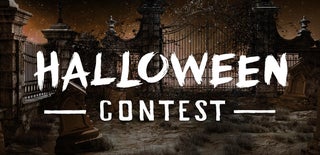Introduction: Skull Mask (wearable)
This dramatic and eye-catching mask is lightweight and comfortable, and can be made at home with simple supplies. Great for parties, parades, holidays, or display.
Step 1: LIST OF SUPPLIES
20" x 30" Black Foam Board 3/16" thick
Hot Glue Gun
Craft Knife, Straight Edge, Cutting Board
Scissors, Pins
140# Watercolor Paper
Water-based Acrylic or Latex Paint (or spray paint)
Paint Brush 1" wide or so
Elmer's Glue, Zots
Styrofoam Head Form (as close to your head size as possible)
Tape Measure
Circle Guide or Compass, Pencils, Markers
Optional: Reflecting Fabric or Tape
Step 2:
Paint watercolor (w/c) paper in your chosen colors. Paint the reverse side black.
Also paint one 8" x 14" sheet black on both sides. Cut several foam board strips about 3/16" or 1/4" wide. Measure your head and cut 1" strips of foam board to create the head band. You can bend foam board by crimping incrementally by hand. Use hot glue to assemble. Place headband on styro head form and put a few pins alongside the band to keep it from sliding around.
Step 3:
Make eye sockets. Cut a partial ring out of black w/c paper and form into cone shapes.
Experiment first with a piece of scrap paper until you get the shape you want, then use as a tracing guide. Secure with small tab and hot glue. Attach to a flat ring of the same paper cut to fit along the edge. Reinforce edge of ring with a foam board strip attached with hot glue.
Step 4:
Do the same with the nose. Notches in the strips are necessary for tight curves, cut them carefully with your craft knife.
Step 5:
See the next step before completing this step. Attach eye sockets to the head band with hot glue. Be careful to place them so they won't block your vision (just above the eyes). You may need to use 1/2" foam board spacers between the socket and band for extra room inside the mask if you wear glasses. Take your time with this step. You can fix the sockets in place temporarily with Zots and try the mask on your head before you attach them permanently with hot glue. It's easier to decorate the rims of the sockets beforehand: apply Elmer's glue to the back of pre-cut pieces of your painted w/c paper, and stick in place.
Step 6:
Form the dome of the skull with bent foam board strips hot-glued in place. Start by connecting the eye sockets with a horizontal strip (#1 RED) that defines the bridge of the nose. Then make a central strip (#2 BLUE) that goes all the way from the bridge of the nose to the back of the headband, defining the crown of the skull. Attach it to a spacer (about 1/2") on the back of the headband. Then do a horizontal strip (#3 YELLOW) that goes all the way around the head, attaching to the outside edge of each eye socket, and the central strip/spacer in back. Use intermediate spacers to fix central and side strips to the head band to provide shape and stability. Then complete the dome with pieces placed in random directions. After a day's work I always go back and add Elmer's glue to the inside of each joint for additional stability. Note: It may be easier to place the eyes on the headband in the previous step after first attaching the horizontal strip (red).
Step 7:
Attach the nose. First I added a central strip to indicate the bone that bisects the sinus cavity.
Step 8:
Create the mouth. Cut overall shape from the black w/c paper and bend into a curve. Attach a strip of notched foam board at each inside end, and one curved by hand in the inside middle, top and bottom.
Step 9:
Attach mouth to nose with a short strip. I stuck a few bamboo Shish Kabob skewers into the head for temporary support. Toothpicks would also work.
Step 10:
Develop the cheek bones and chin, and secure the mouth in place. You don't need to follow the geometry in my example, you can adjust the overall shape and struts as you please.
Step 11:
Provide a grill for the teeth. I used foam board strips for the horizontals and black w/c paper for the verticals.
Step 12:
Complete the skull form.
Step 13:
Add additional struts where you'll be using smaller colored shapes. Cut out your colored shapes with scissors and hot glue in place. You may need to bend them slightly by hand to get them to describe your form. Only use Elmer's for the small pieces edging the eyes, nose, and mouth.
Step 14:
Continue to hot glue your colored shapes in place. If uncertain about placement, use Zots to fix temporarily while you decide.
Step 15:
Eyes. First option rejected. I settled on alternating discs of black w/c paper and reflecting fabric with green outer rim. I added spacers to the bottom of the eye sockets to get the eye discs to float.
Step 16:
Add Teeth. I made two of them from reflecting fabric. I also decided to add a small skull image to the back side of the mask. For this detail I needed to add extra strips in that area to provide more density to accommodate for the smaller pieces.
Step 17:
The finished piece. Taken with and without flash.
Step 18:
View showing the inside. As you can see visibility is pretty good, and the air flow makes for a more comfortable wearing experience than a solid shell. The whole thing took me about two weeks, working on and off. It weighs just under 4 ounces.
Step 19:
Ta-dah!
Step 20:
See you on Halloween...?

First Prize in the
Halloween Contest 2018











